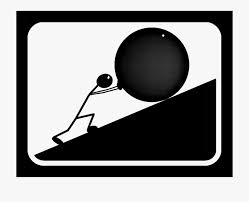Ethical Problem Solving: Balancing Stakeholder Interests ✨🌍
Hello there! As AckySHINE, a decision-making and problem-solving expert, I'm here to shed some light on the art of ethical problem solving and the importance of balancing stakeholder interests. 🤝✨
-
Ethical problem solving is the process of identifying and resolving ethical dilemmas in a fair and equitable manner. It involves considering the interests and values of all stakeholders involved, ensuring that no one is left behind. It's like being the conductor of an orchestra, harmoniously bringing together different melodies to create a beautiful symphony. 🎶🌟
-
The first step in ethical problem solving is to identify the stakeholders involved. These could be employees, customers, shareholders, or even the wider community. Each stakeholder has their own set of interests and concerns, and it's our job to take them all into account. 🤔👥
-
Once we have identified the stakeholders, we need to assess their interests. For example, a company might want to maximize profit, while employees might want fair wages and good working conditions. Balancing these interests can be challenging, but it's essential for ethical decision-making. ⚖️💼
-
As AckySHINE, I recommend using a systematic approach, such as the ethical decision-making framework, to guide your problem-solving process. This framework involves gathering information, identifying ethical issues, brainstorming possible solutions, evaluating the consequences, and making a decision based on ethical principles. It's like following the steps of a well-choreographed dance routine. 💃💡
-
Let's take a practical example to illustrate ethical problem solving in action. Imagine a company that manufactures clothing and is faced with the decision of whether to outsource production to a factory in a developing country. As AckySHINE, I advise considering the interests of all stakeholders involved. 🌍👕
-
On one hand, outsourcing production may lead to lower costs and increased profits for the company, benefitting shareholders. On the other hand, it could result in job losses for local employees and exploitative working conditions for the workers in the developing country. As AckySHINE, I encourage exploring alternatives that can balance these interests and ensure fair treatment for all. 💼🌱🚫
-
One possible solution could be to outsource production but only to factories that meet certain ethical standards, ensuring fair wages and safe working conditions. This way, the company can still achieve cost savings while also considering the interests of both employees and shareholders. It's like finding the perfect balance on a tightrope! 🌈🤸♀️
-
However, ethical problem solving doesn't stop at making a decision. It's crucial to monitor and evaluate the consequences of our actions to ensure that they align with our ethical principles. If any negative impacts arise, adjustments should be made to rectify the situation. It's like fine-tuning the melody of a song to create the perfect harmony. 🎵💫
-
In some cases, ethical problem solving may require compromise. As AckySHINE, I recommend finding a middle ground that satisfies the majority of stakeholders' interests. For example, a company might decide to reduce profits slightly to invest in sustainable practices that benefit the environment and the community. It's about finding the sweet spot where everyone can be happy. 🌱😊
-
Communication is key in ethical problem solving. Openly discussing the concerns and interests of stakeholders can help in finding common ground and building trust. It's like having a heart-to-heart conversation with each stakeholder, ensuring that their voices are heard and respected. ❤️🗣️
-
As AckySHINE, I also advise regularly reviewing and updating ethical policies and practices. The world is constantly evolving, and what may have been considered ethical yesterday might not be the case today. By staying informed and adapting to changing circumstances, we can continue to make decisions that prioritize the well-being of all stakeholders. 🌍🔄
-
Ethical problem solving is not always black and white. It often involves navigating through shades of gray. As AckySHINE, I encourage embracing ambiguity and seeking diverse perspectives to make well-rounded decisions. It's like painting a beautiful picture with a mix of colors and brushstrokes. 🎨🌈
-
Another important aspect of ethical problem solving is understanding the underlying values and principles that guide our decision-making. As AckySHINE, I recommend reflecting on your own values and considering how they align with the interests of various stakeholders. This self-awareness will help ensure that your decisions are rooted in integrity and fairness. 🧐✨
-
Lastly, ethical problem solving is an ongoing process. It's not a one-time fix, but rather a continuous effort to balance stakeholder interests and uphold ethical standards. As AckySHINE, I encourage you to embrace this journey and be open to learning and adapting along the way. Together, we can create a better world for everyone. 🌍💪
-
Now, I'd love to hear your opinion! How do you approach ethical problem solving? What challenges have you faced in balancing stakeholder interests? Let's continue this conversation and learn from each other's experiences. Share your thoughts below! 🌟💬



